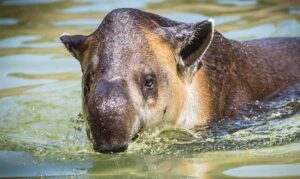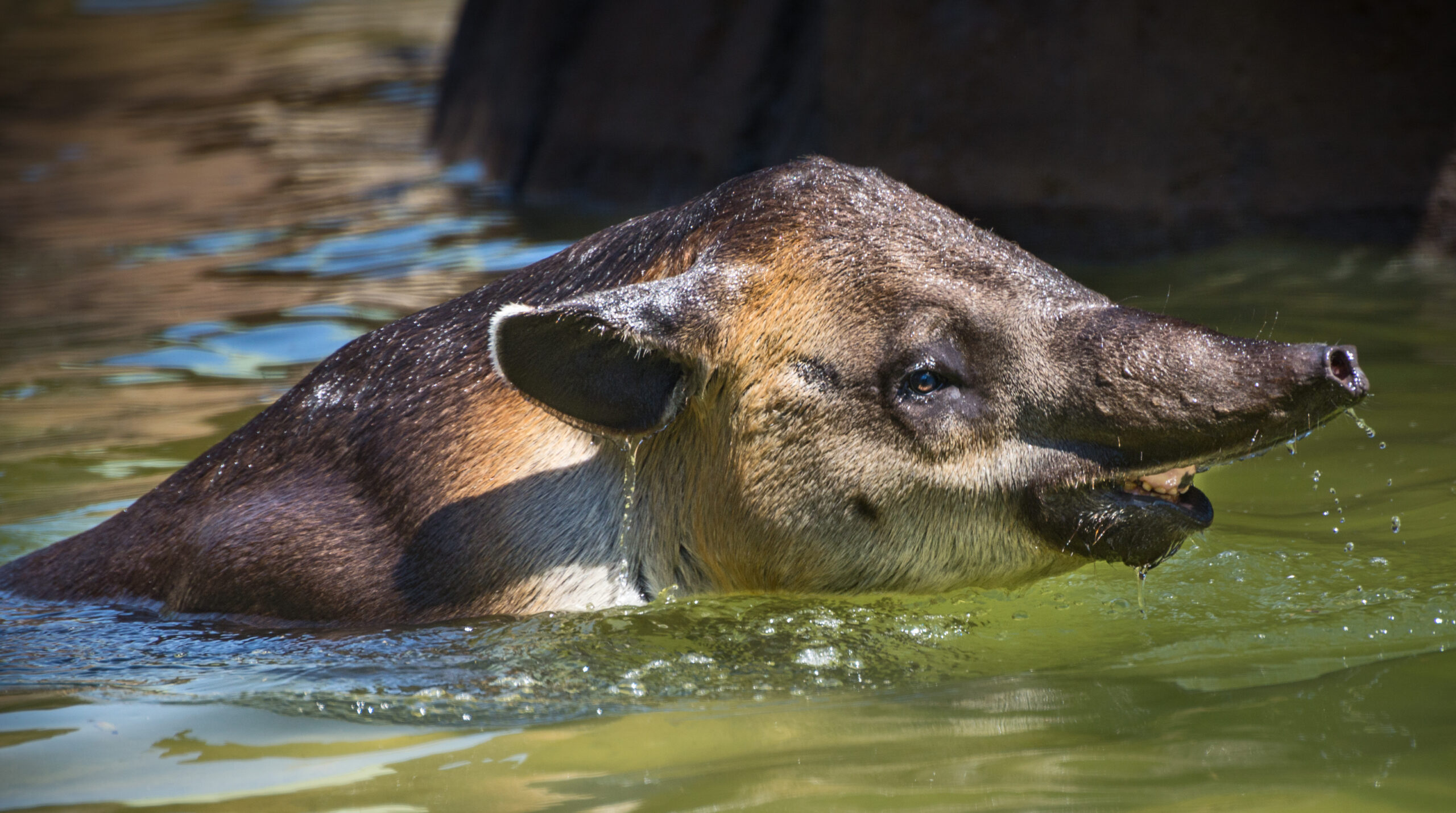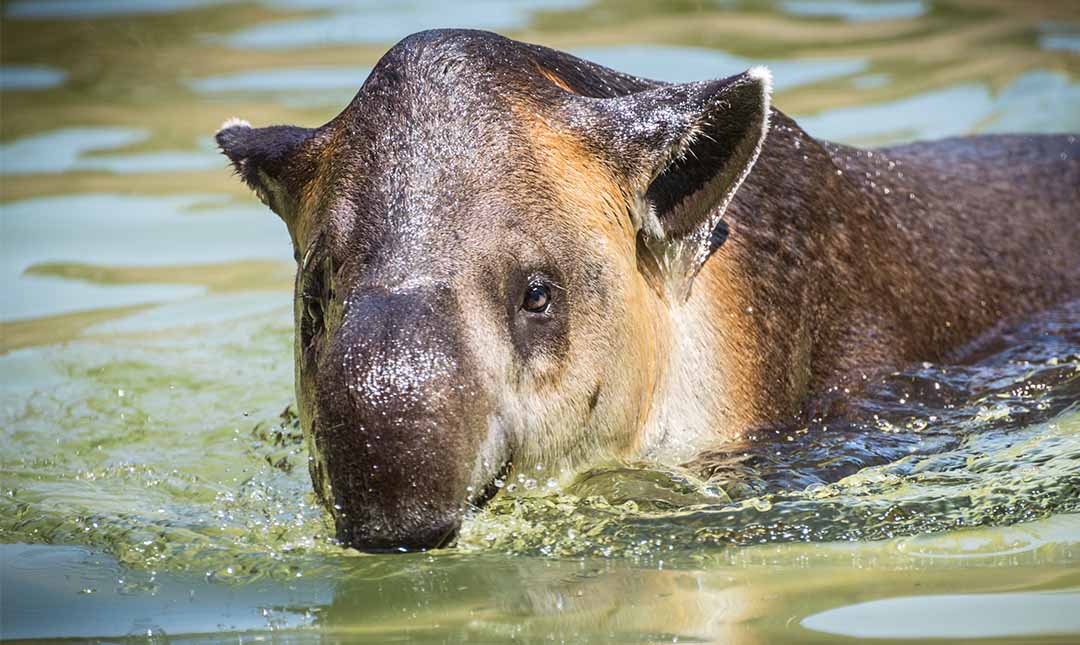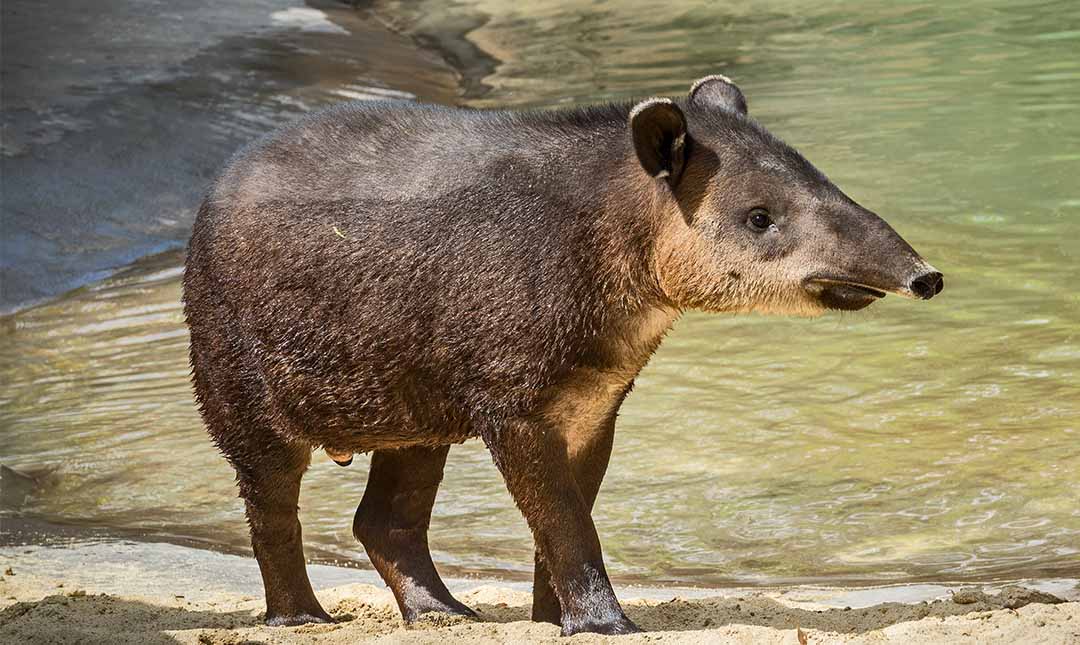About
Tapirs have changed very little over the past 35 million years. They first evolved in North America and migrated over a land bridge into South America. Their closest living relatives are rhinoceroses, horses, and zebras. In Belize, they are known as “mountain cows.” Tapirs are now extinct in North America, and populations in Central and South America are at risk. Tapirs are solitary and mainly nocturnal. Following a thirteen-month gestation, a single calf is born with white stripes and spots, which make it look somewhat like a reddish-brown watermelon. This camouflage allows the baby to blend in while hiding in dense bushes for the first weeks of its life when mom leaves to forage for food. Adult coloration begins to appear at six months. Youngsters stay with their mothers for one or two years.
Water is an important part of tapir life, and they spend hours each day in water to keep cool. This bathing has the added benefit of getting rid of ticks and other parasites. Excellent swimmers, tapirs can dive and hold their breath underwater for several minutes with their prehensile snouts functioning as snorkels. Swimming lessons for the young begin at about three weeks of age. When threatened, tapirs head for the water. Predators include jaguars, mountain lions, and American crocodiles. Only 5,000 Baird’s tapirs are estimated to remain in the wild. Populations continue to decline due to habitat destruction and illegal hunting.


Habitat
Baird’s tapirs inhabit tropical rainforests, cloud forests, and riparian woodlands of Central America.
Diet
Tapirs are herbivores, eating fruits, leaves, grasses, and twigs.
Physical Characteristics
Tapirs can reach six feet in length and four feet in height. They weigh between 330 and 660 pounds. Lifespan is up to 30 years.
LOCATION WITHIN THE ZOO
You’ll find this animal in the Rainforest of the Americas. See Zoo Map.



